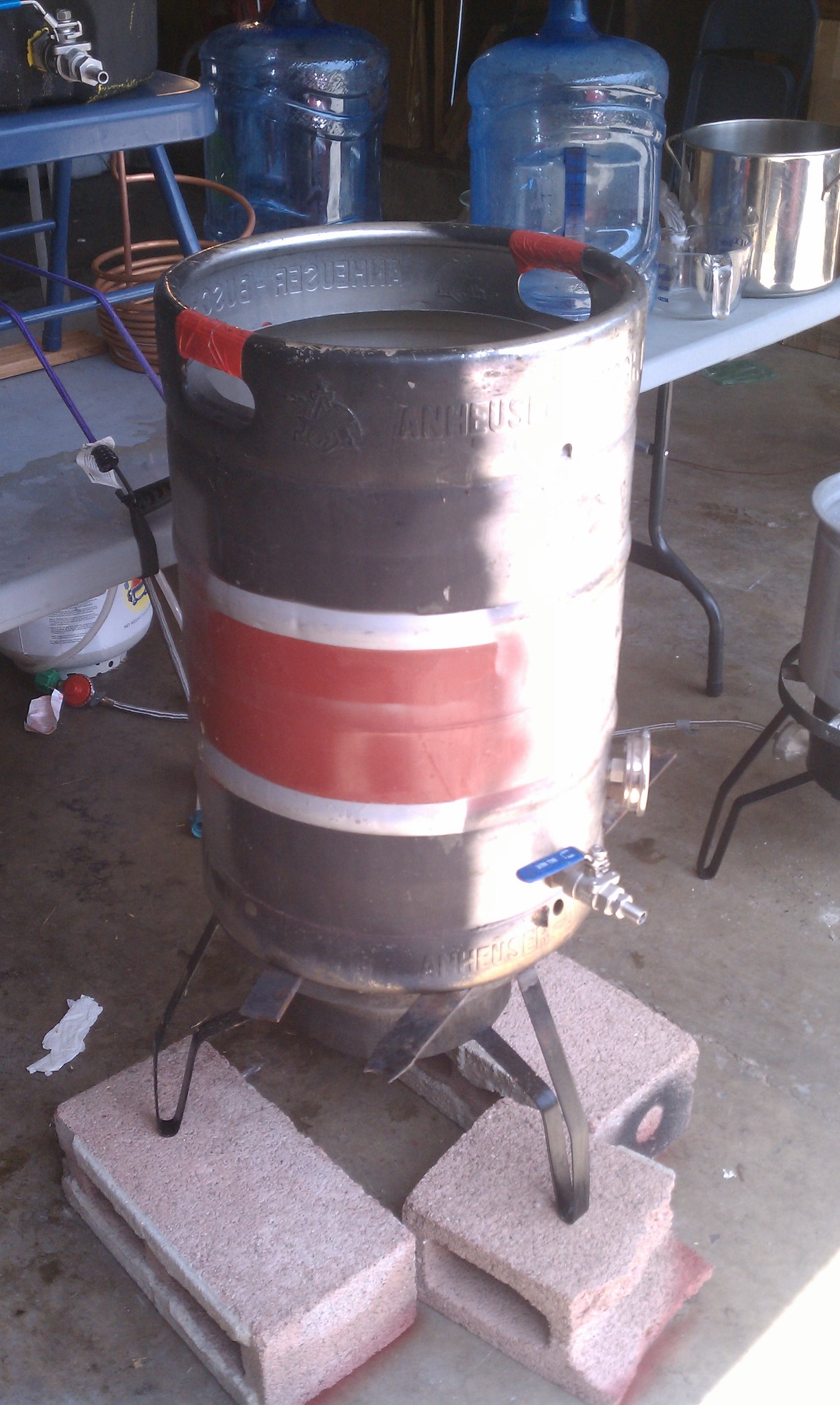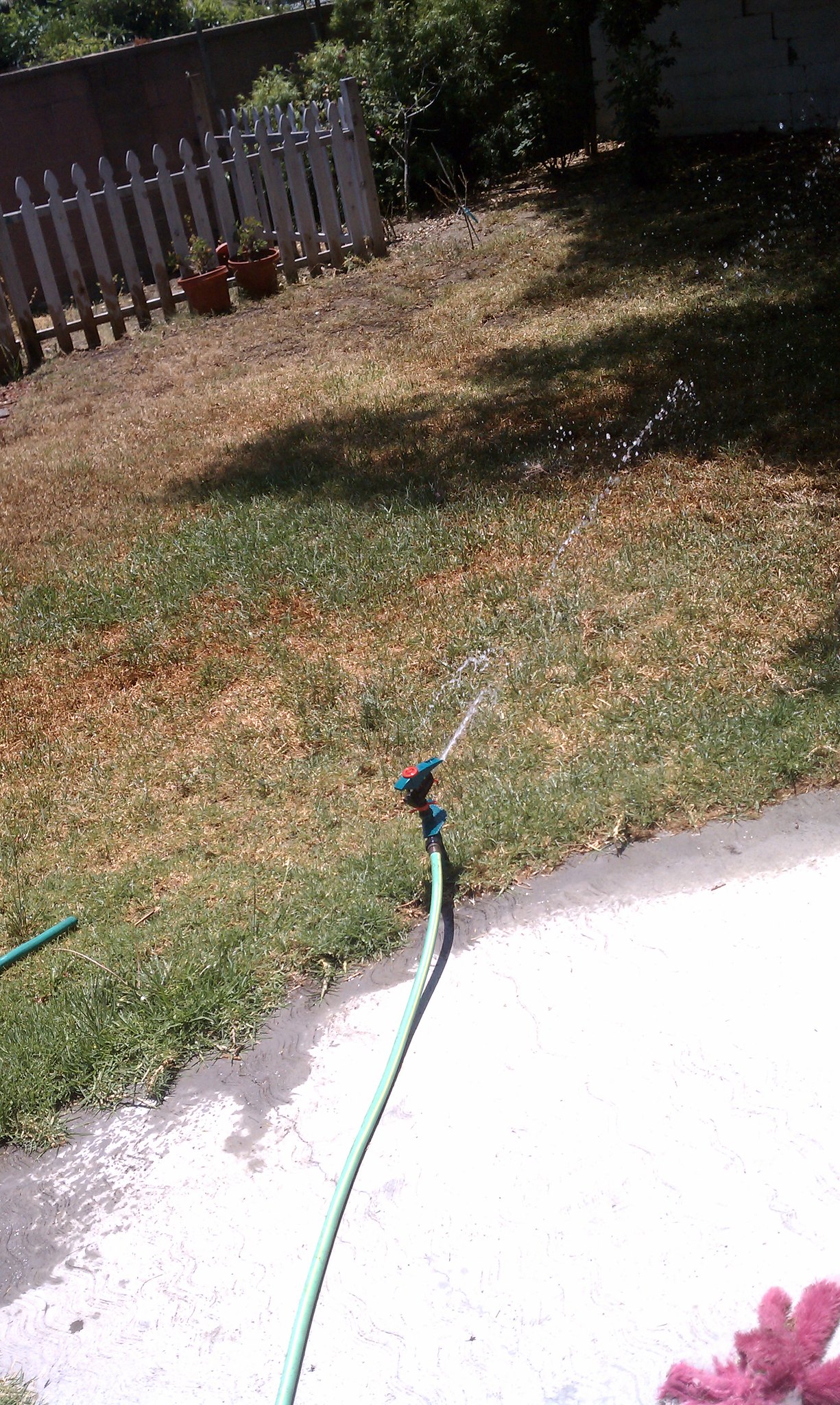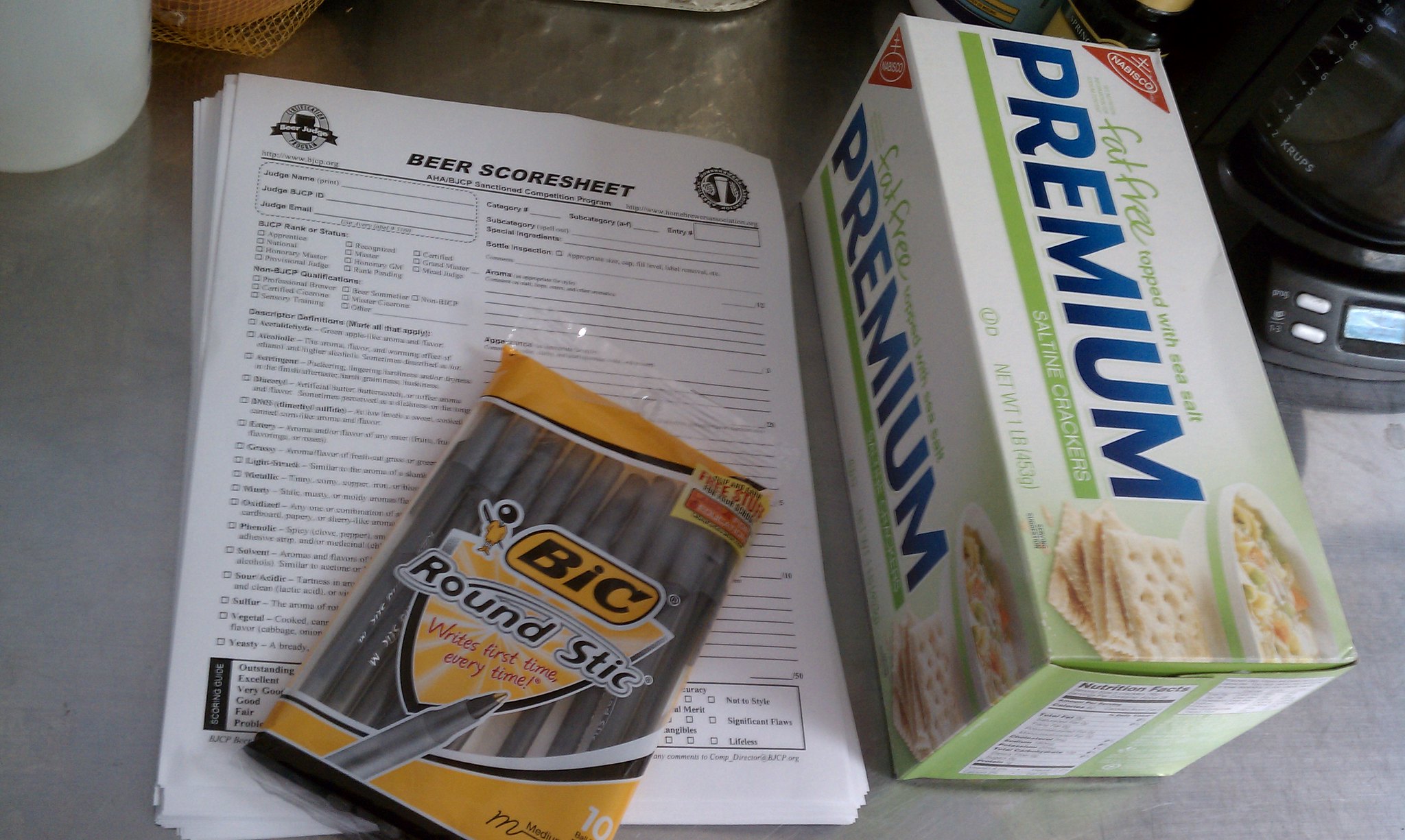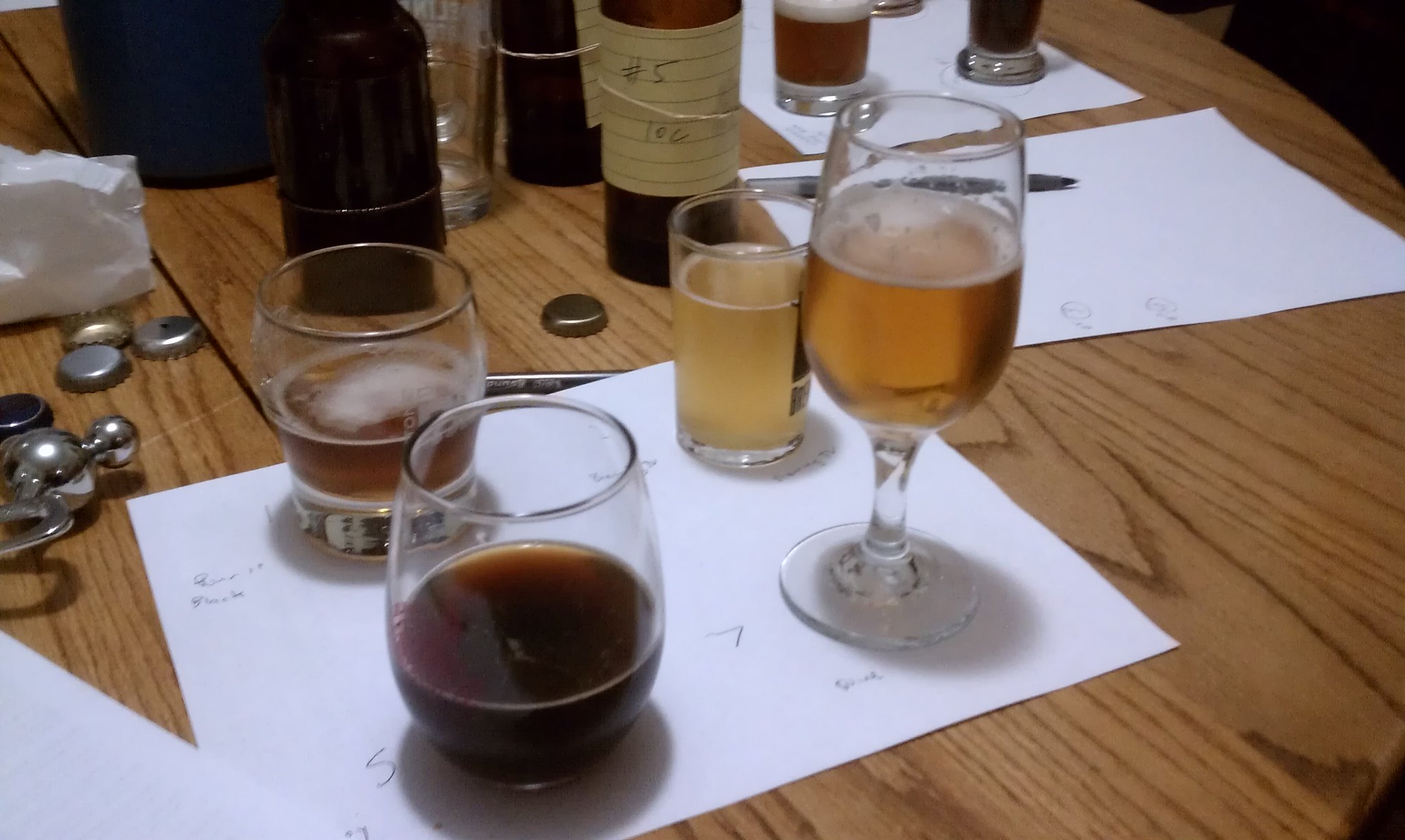 |
| Ready for another round |
As the title of my post indicates, for the latest addition of my BIG IPL series I decided to mix it up a little and add some Mexican flair in the form of one of my favorite lager yeasts WLP940 Mexican Lager. That's about the extent of the Mexican flair, no other ingredients just a new yeast which I harvested straight from the latest batch of Costa del Sol. (For the technique I employed for this check out Billy Brew's yeast washing video). The yeast was not the only change I decided to make; others included the amount of length of the boil, amount of knockout hops, the total bitterness and rice vs rice extract.
I decided to up the length of the boil from 75 minutes to a targeted 90. The reason I did this was a comment Robert Kennedy made at the AHP anniversary party about brewing with pilsner malt. He mentioned that if your grist has over 50% pilsner malt in it, then you should plan for a longer boil to combat the production of DMS. He therefore always boils beers with high percentages of pilsner malt for a minimum of 90 minutes. There seems to be a lot of conflict opinion online about the status of this belief/myth but I figured why not add a few more minutes to be on the safe side.
Another change I made was to do a little hop bursting at the end of the boil. Basically I kicked up the amount of knockout hops I planned on using from about 1 ounce total to 2. This should deepen the flavor and brighten the aroma at least that's the plan. I decided to do this after I have locked in the latest version of the recipe so it somewhat works against the next section of changes.
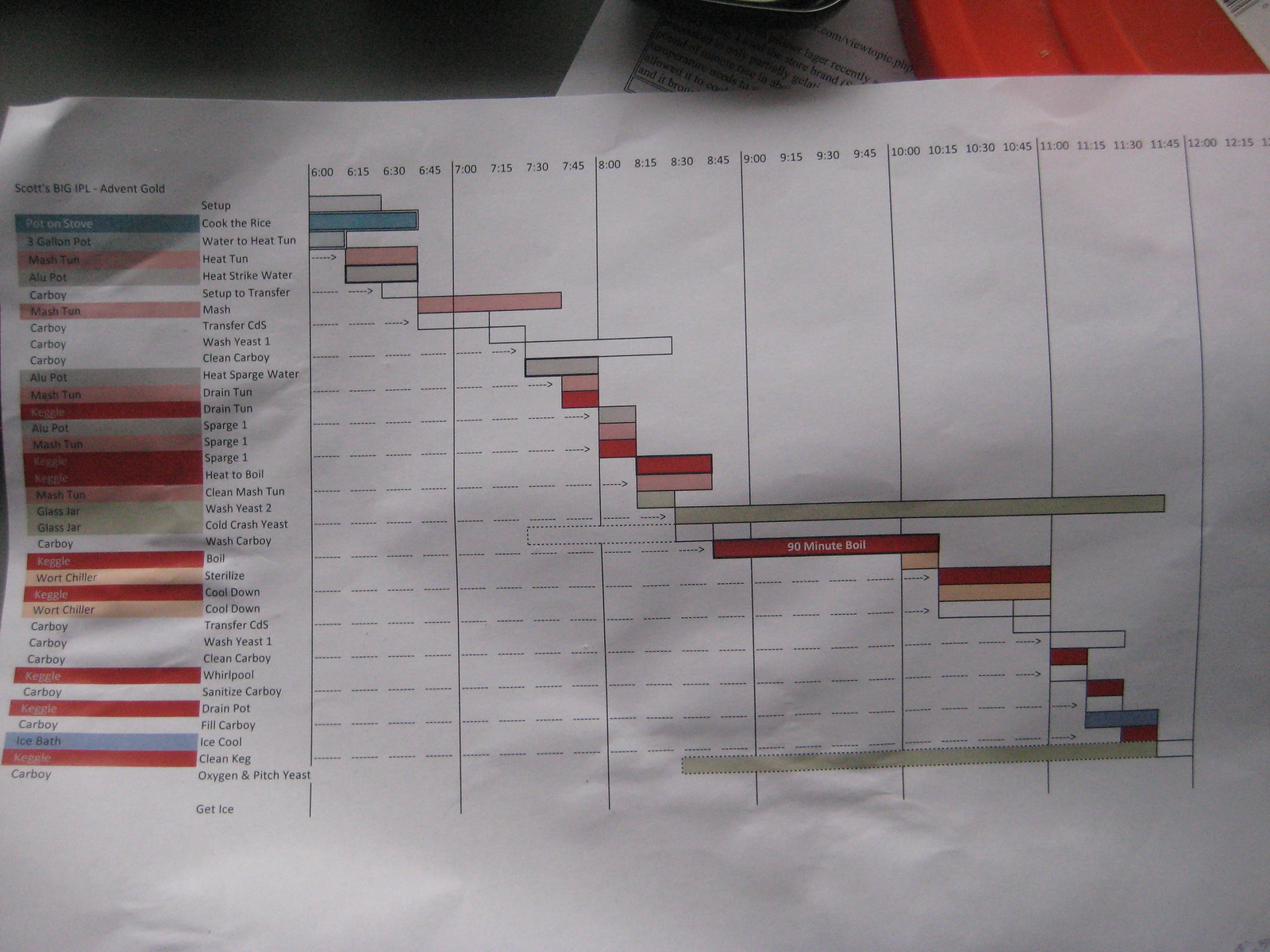 |
| Really trying to become more efficient during brewing |
When doing extract brewing topping off with additional water changes the hop utilization factor. When I was extract brewing I would routinely top off with about a gallon of water. I was doing this when I first created the recipe for IPL however in all my recipe sheets I had always built them for a full boil. When first I converted it to all grain I only worried about the grain not the hops keeping them around 100 IBU. I wasn't overly please with the final bitterness and flavor level with that first batch but assumed it had to do with the addition of the Citra, however when I brewed it again I still wasn't happy with it so I blended the extract and all grain versions together to round it out. I then went back to my notes and inputted the recipe exactly how I brewed it completely with a four gallon final volume topped off to five. Doing this I saw a 20 IBU drop to around 80 IBU which jived with both earlier recipes and the lab test Karl Strauss did on it. With this info in had I adjusted the recipe down to the 80s. In the end, the extra time (a lot more then 90 - read below) and the hop bursting bumped me into the 90s.
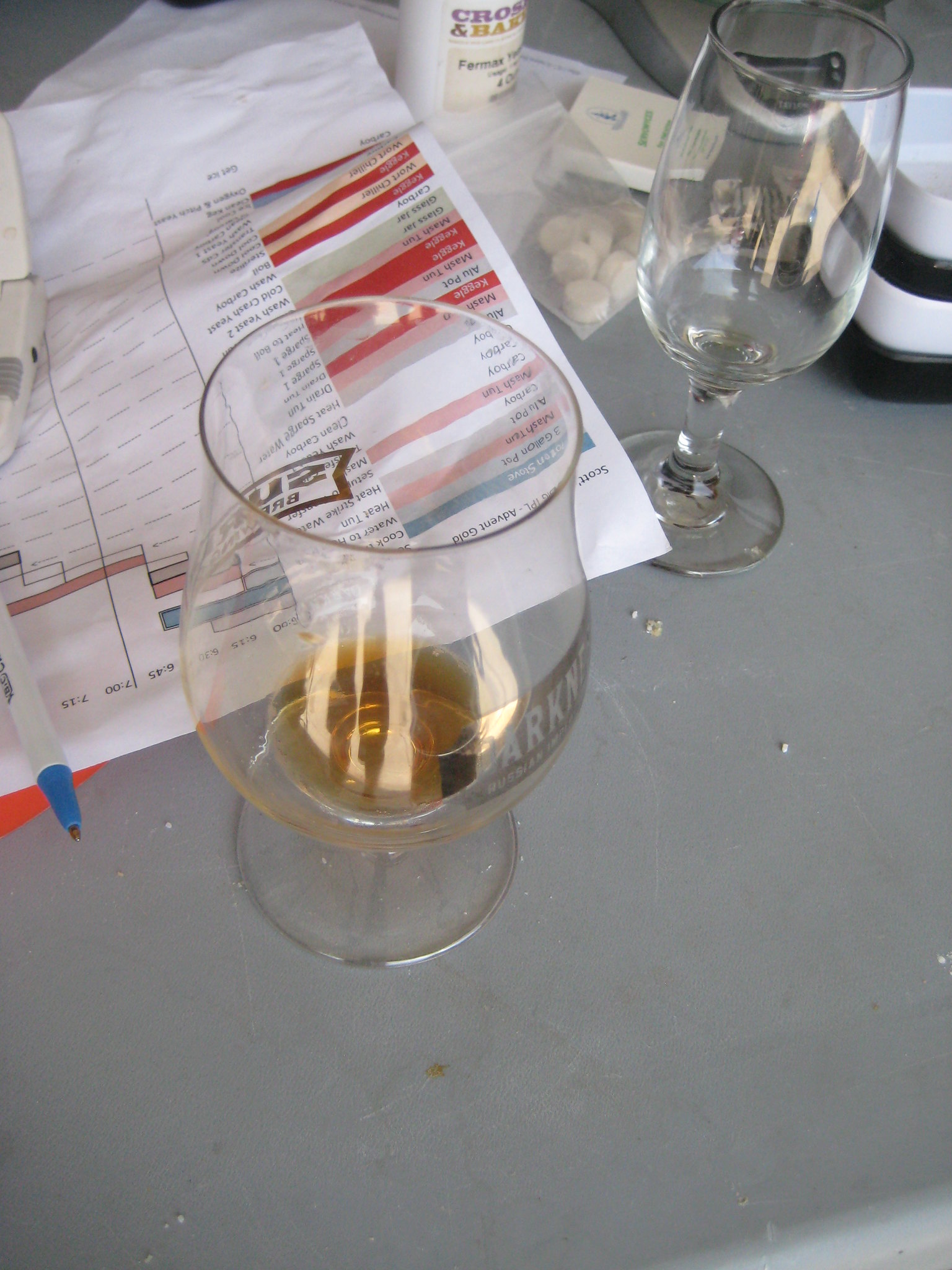 |
| A little Westbennetteren 12 |
I decided that for this round I'd go all all-grain and ditch the rice extract. After a lot of researching I decided to use minute rice as it is precooked partially gelatinize. I cooked it prior to adding to my mash. I put a pound of minute rice in about 4 quarts of water and cooked for about 15 -20 minutes. I held the temperature at 190 for 10 minutes for rice starch to fully gel. I let it start to cool and added straight to my mash.
Using the rice complicated the brew a little as I had no tool to calculate the effect of adding over a gallon of 180ish rice to my existing grist. I also ran into the problem as my calculations had flaked rice in the main grist so all the water volumes had included that amount of matter in its water ratio section. To make matter worst I over shoot my strike water by 10 degrees, lowered it by 20 and figures the rice would bump it back to 148. Nope I ended up with a mash in temp of 142 so I pulled off a gallon of liquid, blasted it to a boil on the cooker and tossed it back in. I was able to then NAIL my mash temp at 148 for an hour while I racked the Costa del Sol to secondary and washed the yeast for later that day.
 |
| My favorite hop chart |
I failed to recognize until it was too late that I no longer had accurate water volumes and ended up over filling my preboil by over a gallon diluting my starting gravity by about 0.006 (1.051 vs 1.057). To try and catch back up I decided to further extend my boil to about 2 hours total. I was unworried about the additional time would do to the bitterness levels as the effect boil has on bitterness in non-liner, flatting out around 50 minutes. This meant only a change of a few IBUs total nothing to stress over.
I got everything ready and turned brewing operations over to my wife so I could take our daughter to Little Gym. As we were headed home Bonnie told me that we had run out of gas. I wasn't surprised as I had a feeling I'd run out (I should be tracking the consumption better). I told I'd be home soon and asked her run to Home Depot and switch out tanks. By the time I got home Brian Evans of Brain Evans Photography and Thee Beer Book had arrived to take some pictures. Brian had asked several months ago if he could come over and include me in Thee Beer Book project that he was working to finish up. I was quite honored as he's taken pictures of a lot of the guys I look up to in the OC brewing scene and I've known and followed his work for over a year now. We'd first met when he came over to photograph my friend Don Barnum during a brewday I had hosted at my house. It also happened to have been the day I brewed the Karl Strauss winning batch of Scott's BIG IPL, so it was fated that the day we were able to sync up schedules I'd happen to be brewing another batch.
 |
| Taking a picture of Brian taking pictures |
I took Brian around the brewery, covered some of the basics of what I was doing and showed him some of my favorite beers. I showed him how to transfer a beer to secondary which he had not yet had an opportunity to see and sampling the Coast of the Sun as it came out of primary. I'd saved my last can of 5/11 Furious for him to sample. We also sampled Westbennetteren 12, which I'd kegged temporarily until I get around to bottling, and thieved a sample of Halvtreds. Both are coming along wonderfully but I would like a little more sourness from the Halvtreds. Once Bonnie returned I brought the beer back to boil continuing the clock and showing Brian around.
Coming into the home stretch everything was looking good, I was progressing nicely on clean up, the photo session/demo hadn't majorly affected the process and according to my refractometer I had caught back up from my wort dilution earlier. Once the timer hit zero I killed the gas and started the chiller with all the new connections looking tight. At around 110 I opened the lid, explaining to Brian the importance of sanitation once the wort drops below 160, only to find a leak coming from on of the connections. Apparently the heat had soften the hose enough to allow a stream of water to escape. Refractometer and hydrometer readings conformed my fears as all the ground I had made up with the longer boil had been completely eroded giving me a corrected gravity of 1.073... boo!
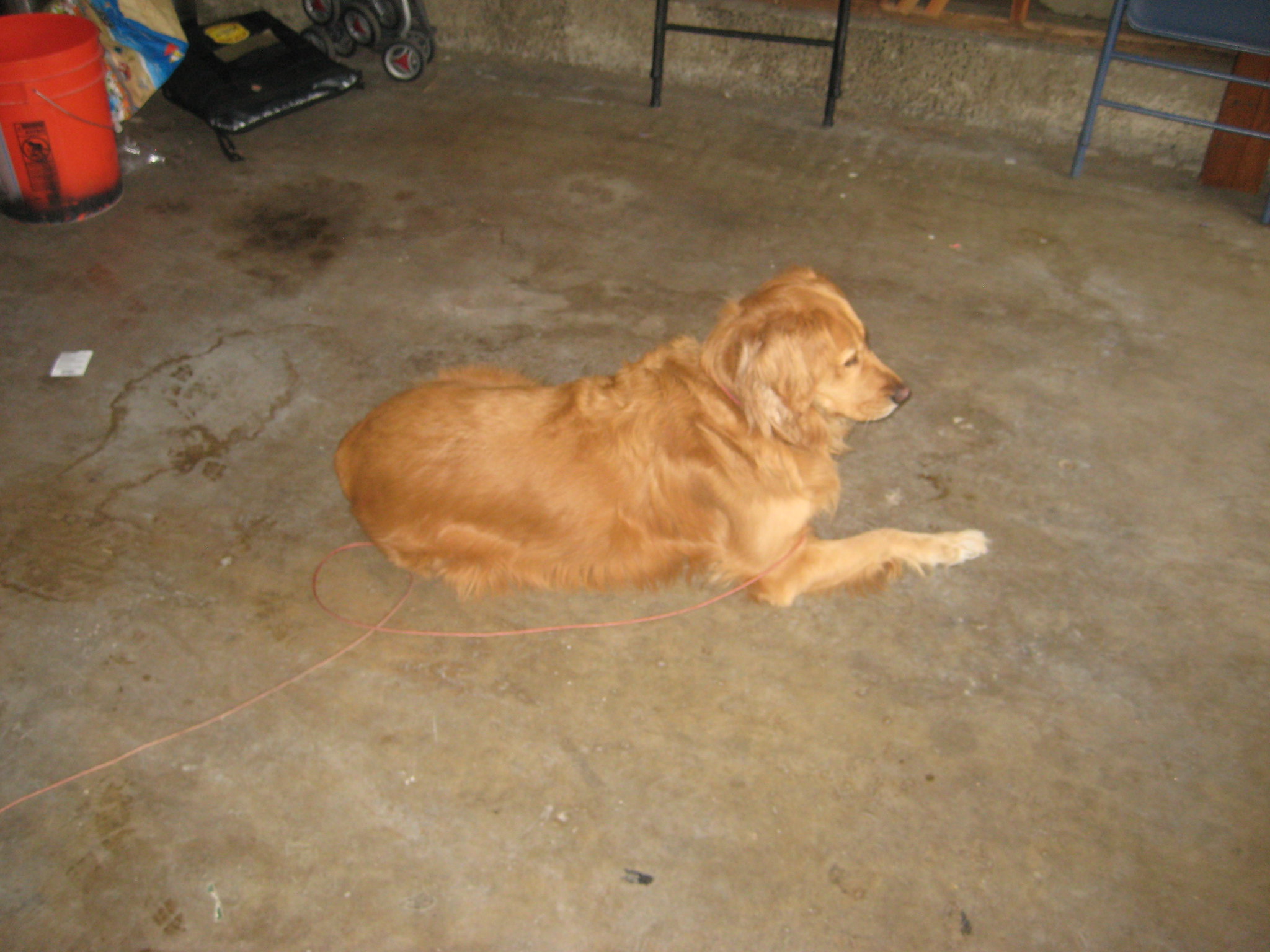 |
| Faithful dog companion |
Now I had a few options here; I could bring the wort back to a boil and attempt to boil off more liquid (the con side was that it would majorly mess with the bitterness levels and probably destroy the beer), I could bring it to 160 and hold it there for 15-30 minutes (this probably was the best option with time being the only issue) or I could do nothing and take my chances with the water (hoping that any contaminates present in the hose or wouldn't infect the beer). Going against my better judgement I opted with the third choice and fixed the leak and continued the cool down. I figured I had a pretty healthy yeast cell count tailor made for the cold lager environment it would be exposed to. Basically I was gambling that the nutrients, cell count and environment would make the yeast the dominate organism the beer not outside contaminates.
Figures crossed
-SNB

